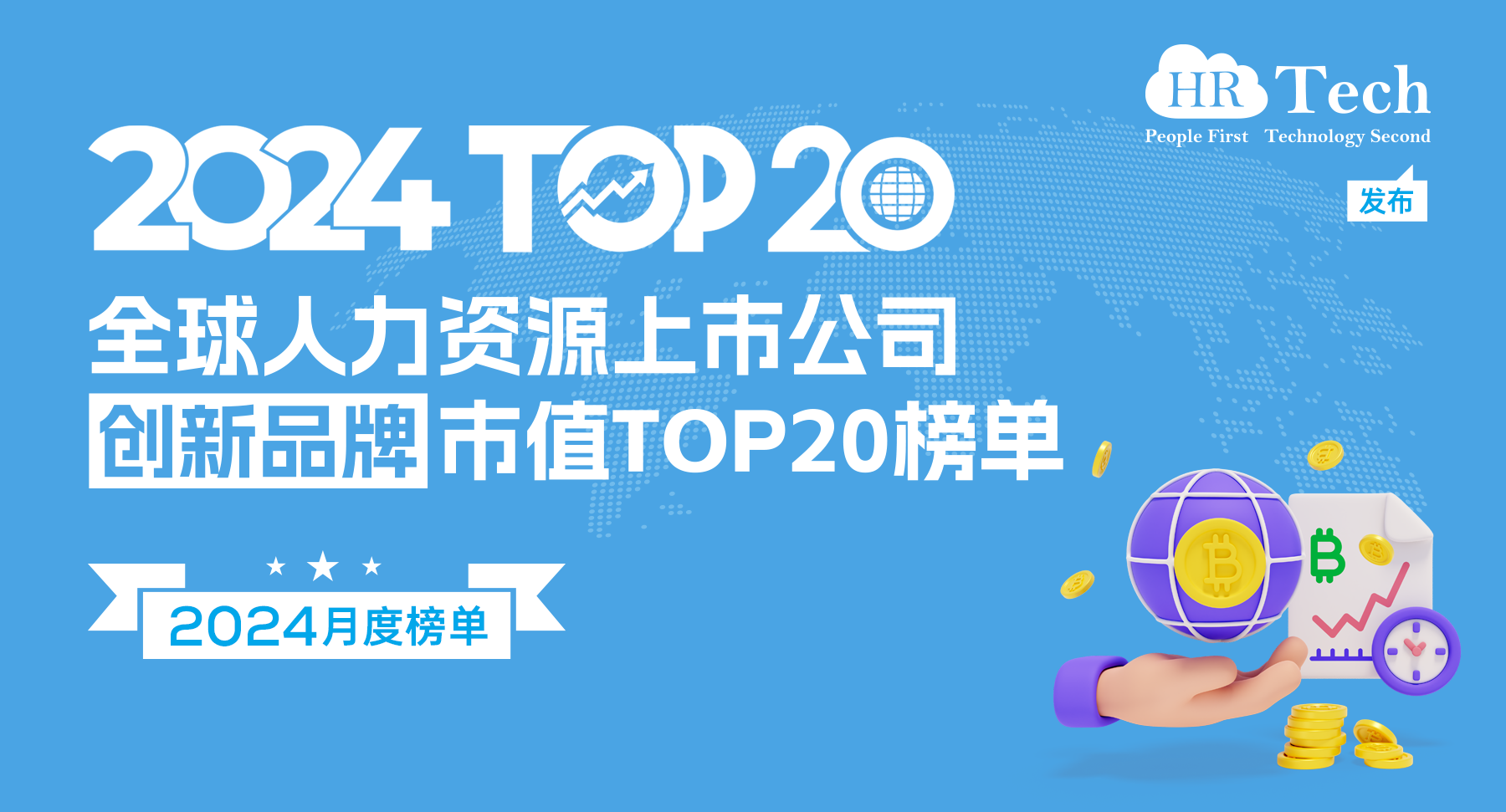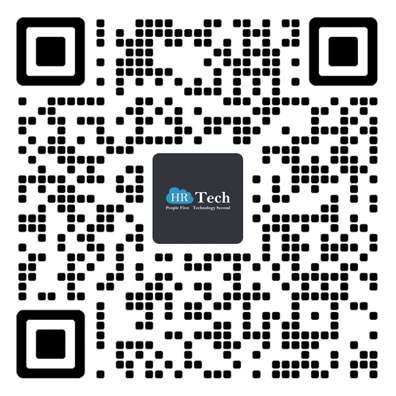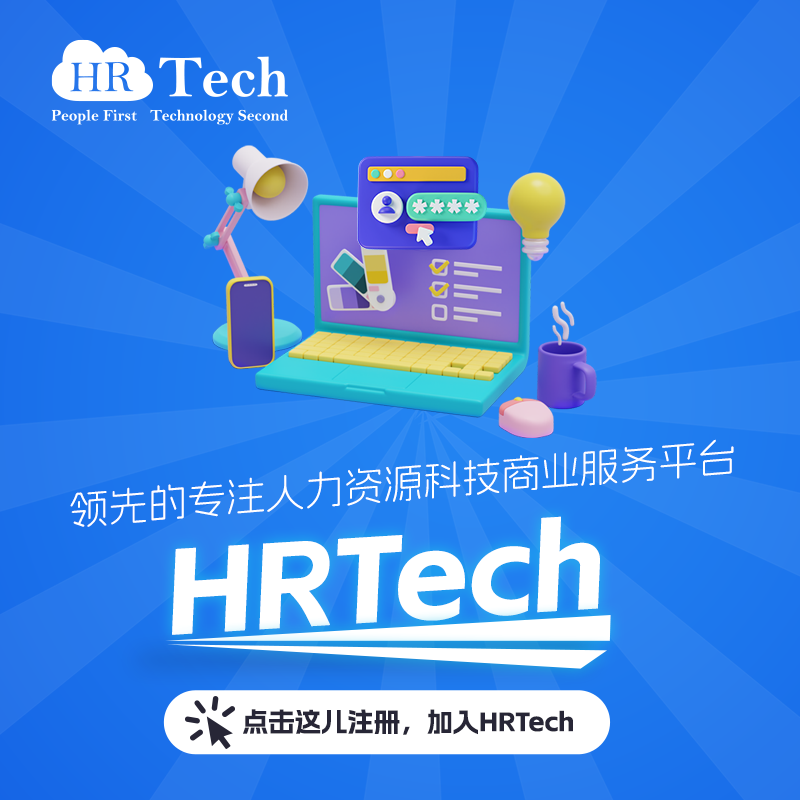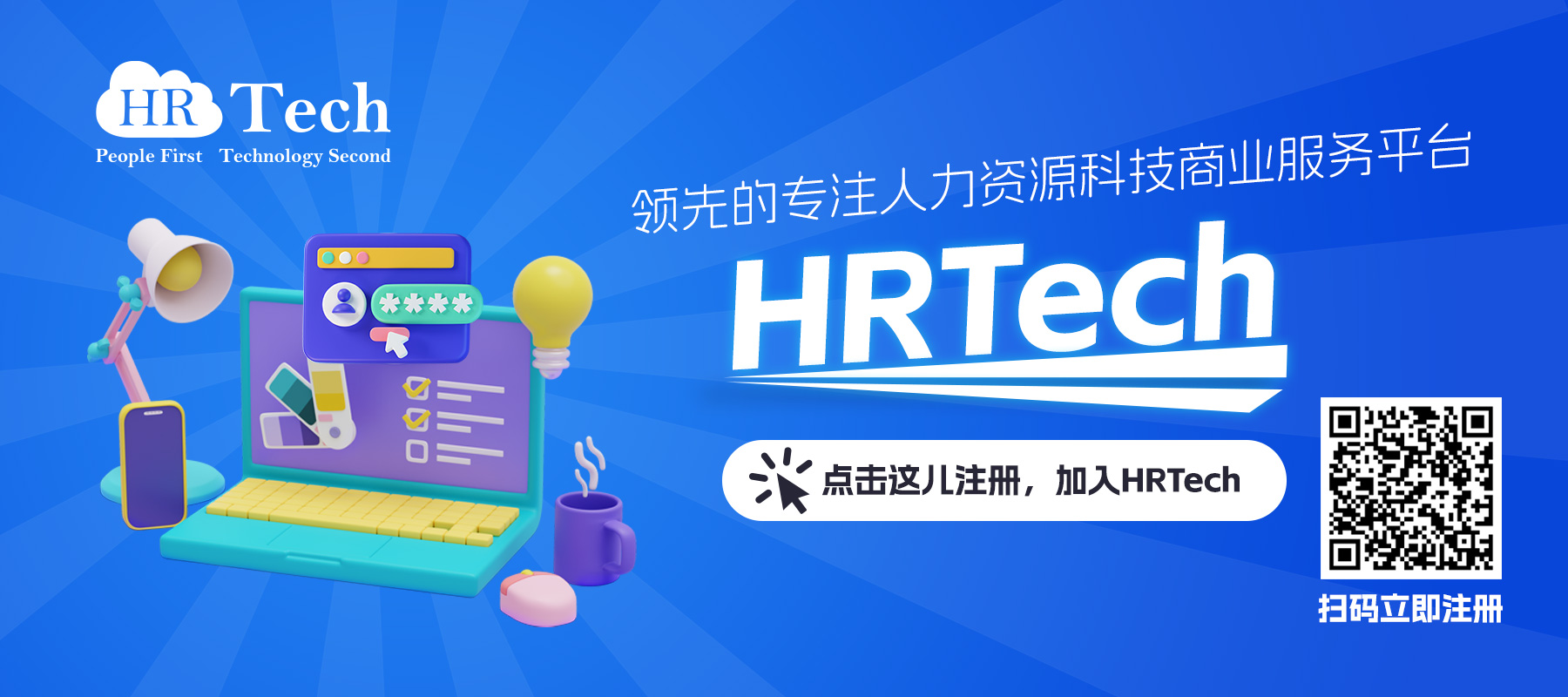资讯
全球EOR服务机构Oyster 完成 5900 万美元 D 轮融资,估值12亿美元,成为HRTech 领域新的独角兽
Oyster成功获得5900万美元D轮融资,加速其全球雇佣平台的发展。自2020年创立以来,Oyster致力于无国界雇佣和合规性,现已扩展至60多个国家,并认证为B型企业。该平台不仅促进了新兴市场的直接外国投资,还为当地人才开辟了更多职业机会。此次融资将进一步强化其全球合规和支付基础设施。
全球雇佣解决方案公司 Oyster® 提供分布式团队的雇佣、支付和关怀服务,已完成由 Silver Lake Waterman 领投的 5900 万美元 D 轮融资,现有投资者包括 Emergence Capital、Stripes、Georgian、G2 Venture Partners 和 Endeavor Catalyst。本轮融资将助力 Oyster 加快平台路线图的实施,扩大影响力,提高客户的合规性,并增强客户吸引和留住顶尖人才的能力。在 Oyster 平台上,超过 40% 的团队成员位于新兴市场,2023 年 Oyster 向新兴市场汇出了数亿美元。本轮融资对公司的估值达到了 12 亿美元,使其总融资额达到 2.86 亿美元。
“全球雇佣极其复杂,涉及到许多动态因素。Oyster 作为该领域的最佳解决方案出现,解决了这些传统的挑战。”
之后: “全球雇佣极其复杂,涉及到许多动态因素。Oyster 作为该领域的最佳解决方案出现,解决了这些传统的挑战。” Silver Lake Waterman 的管理合伙人 Shawn O’Neill 表示:“在短短四年内,Oyster 构建了一个提供全球合规性和深度本地 HR 知识的可信赖工具和资源平台,这一策略使其成为市场领导者之一。Oyster 团队在提供当前全球雇佣所需的专业 HR 解决方案方面处于有利地位,我们期待未来更多的成就。”
在过去的一年中,Oyster 推出了多种产品和服务,为公司提供了更多工具和洞察力,使其能够自信地扩大其全球业务。全球薪酬和签证赞助帮助简化操作并支持无国界团队,而薪酬洞察工具则为国内和国际员工提供了公平的薪酬建议。此外,Oyster Embedded 是业界首个无代码解决方案,使客户能够在其产品中直接提供全球招聘、薪酬和奖励。
通过使合作伙伴专注于其最擅长的领域,同时确保全球雇佣的公平和合规,Oyster 吸引了 HR 信息系统和专业雇主组织(PEO)合作伙伴,如 BambooHR 和 TriNet,为联合客户提供灵活性、规模和优质的招聘体验。为了进一步证明 Oyster 的世界级知识和 AI 能力,The Josh Bersin Company 选择 Oyster 作为其 HR AI 助手 Galileo™ 的可信内容合作伙伴。
作为全球少数获得 B Corp 认证的独角兽公司之一,Oyster 的使命是通过民主化全球工作机会来创造一个更加平等的世界,让每个人,无论身处何地,都有机会繁荣。Lokalise、Quora 和 Printify 等客户选择 Oyster 来制定可持续的跨境人才战略,提供具有竞争力的招聘方案,吸引和留住人才,并在雇佣全过程中保持合规。公司深度的国家级情报在 180 多个国家实现了雇佣和合规的自动化,减少了内部人员、HR 和薪酬团队的负担,同时节省了高昂的外部咨询费用。
“Oyster 联合创始人兼 CEO Tony Jamous 表示:“本轮融资验证了我们建立合规和薪酬情报基础设施以推动全球增长的方式是正确的。我们感激 Silver Lake Waterman 团队与我们一样,相信全球雇佣不应是一种交易性服务,而是一个重视人类潜力、促进创新并推动经济影响的动态关系。在 Oyster 成功的核心是我们对使命的坚定承诺:我们相信,通过使各地公司能够在任何地方招聘员工,我们可以为所有人创造一个更加可持续和公平的未来。我们为能够为这场以人为本的全球雇佣运动做出贡献而感到自豪。”
关于 Oyster
Oyster 是一个全球雇佣平台,帮助公司雇佣、支付和照顾其全球团队。它使成长型公司能够为国际团队成员提供他们应得的体验,而无需通常的麻烦或开销。Oyster 实现了全球范围内以人为本的雇佣,提供可靠的合规合同、薪酬以及优厚的本地福利和待遇。Oyster 由 Tony Jamous 和 Jack Mardack 于 2020 年 1 月创立,本身也是一家完全分布式的公司,拥有多元化的全球团队。更多信息请访问 https://oysterhr.com。
关于 Silver Lake Waterman
Silver Lake Waterman 专注于为技术和技术驱动行业的晚期增长公司提供灵活的扩展资本。欲了解有关 Silver Lake Waterman 的更多信息,请访问 www.silverlake.com/portfolio
资讯
【参会指南】日程发布:深圳HR科技年度论坛9月13日在深圳益田威斯汀酒店盛大开幕,附录精彩介绍与门票
2024人力资源科技年度论坛,你为什么不可错过?我们简单总结:前沿趋势话题:2024年度趋势与名企大咖亲身分享未来趋势,机会难得让您先一步看到未来最佳实践案例:特邀美高梅、HAVAS、FIH富智康等各大名企HR负责人在员工体验、招聘、人才发展、数字化趋势等方面分享2024最佳实践案例最新HR战略: 遇见趋势,特邀业内资深大咖与你聊最新一手HR战略,预见2024下半年规划2025遇见优秀同仁:现场相约500+优秀的HR负责人,获得专业交流的机会最新科技话题:特设出海战略、HR数字化、员工体验等讨论环节,为HR专业人士提供实用的行动指南。诸多优秀机构:现场相约国内优秀的HR科技机构和新产品新服务精彩好礼多多:现场主办方及诸多机构赠送2024新款现场发布好礼重磅颁奖典礼:现场颁发2024员工体验大奖以及候选人大奖、2024人力资源科技创新大奖,同时获奖嘉宾实践分享影响和改变未来的HR盛会
。。。。更多精彩尽在9月13日周五深圳的年度论坛现场,让一部分HR先看到未来!
2024HR科技年度论坛·深圳 邀你先一步看到未来会议时间和地点:签到时间:9月13日周五 上午8:30分开始签到
凭手机号码即可完成签到 因日程丰富,请准时抵达会议地点:深圳益田威斯汀酒店(深南大道9028号-2)三楼宴会厅 地铁出行:地铁1号线、2号线、8号线 世界之窗站 A出口即可 会议签到后请注意:我们认真设计了您参会整个过程
签到完成后,请领取参会礼包,最新云图典藏版,和吊牌等
在我们会议日程墙的位置驻足了解下整体会议情况
会议展区你可以了解最新的产品与解决方案,并与他们互动交流
会场HR科技云图墙前面发现并了解符合公司需求的HR科技服务机构
进入会场后,建议前排就坐,结识当天的好友吧!
接下来就是最精彩的高端论坛时刻。。。认真聆听吧互动交流区,更有诸多最新的未来科技创新产品与解决方案
会议全程需佩戴吊带作为参会凭证,工作人员将随机检查吊牌,离场请返还会议吊牌。会议议程请关注我们的微信公众号获取或现场日程墙,一切以现场为准。
会议日程安排如下图:提供和展示国内优秀的人力资源科技的数字化探索和实践,一起开拓科技引领未来全球视野。
会议现场的各个展台准备了多种精美礼品,欢迎拜访。现场还有特制的HRTech精美礼品兑换,活动详情可见现场海报。*特别注意:会场中我们鼓励互动交流,但是坚决制止未经允许的商业推广行为。同时,主办方不会在现场组建微信群、小程序等,请注意甄别,随时可以跟我们反馈,保护自己的信息安全。请关注HRTechChina微信公众号作为唯一信息途径。会议核心互动会通过微信公众号完成(论坛日程、参会守则、照片直播、榜单、云图新版等)联系我们: 小科@HRTech
微信:hrtech-china
邮件:hi@hrtechchina.com2024人力资源科技年度论坛-“Whats Next”时间:9月13日 周五 9:00-17:00地点:深圳 益田威斯汀酒店三楼适合参会人群:企业HR领导者,负责人、HRSSC\HRIT相关同仁、HR各模块负责人等HR免费报名:http://hrnext.cn/bzHor1 企业HR同仁可获得免费门票(扫描上方图片二维码可免费抢票)目前报名超过500+,阿里、联想、比亚迪、美高梅、一汽大众、迪芬尼 、资生堂、广东顺大食品调料、好太太、安利、海尔、携程旅行、中海驰、友达光电、同程、美团、菜鸟、平安集团、腾讯、丰疆智能、玛氏、水务科技、立讯精密、万可电子、HAVAS、大参林医药、意略明数字科技、数贸科技、FIH富智康、鹏丰电气、银河集团、水务规划设计院、华润置地、TCL、艾玛压缩、等名企HR科技同仁
资讯
薪资福利管理软件公司Zellis Group收购员工福利管理软件供应商Benify,改革全球福利软件
Zellis Group(或 “公司”)是 Apax Partners LLP(“Apax”)旗下基金投资的一家提供人力资源、薪资和福利管理软件的公司,从 Vitruvian Partners 收购员工福利管理软件供应商 Benify。作为交易的一部分,Benify 将与 Zellis 集团的福利管理和员工参与软件业务 Benefex 合并,Vitruvian Partners 将与 Apax 基金一起成为 Zellis 集团的少数投资者。
Benefex和Benify合并后将成为全球领先的福利、奖励、表彰和员工参与软件供应商,为全球客户提供更高的价值主张。Benefex和Benify具有很强的互补性,此次收购将通过扩大的地理网络、增强的产品组合和更广泛的服务范围,创建一个真正的全球性解决方案。 两家公司的合并将使客户受益于人力资源、薪资和福利承运商方面更深入的平台集成套件。此次收购正值全球雇主加快技术投资步伐,以创建福利和奖励方面的全球统一体验,并以消除管理和确保合规为基础。
Benefex 于 2018 年被 Zellis 集团收购,自此经历了快速的全球增长,通过其现代福利管理、中介和参与产品为客户提供卓越的员工体验。
Benify 成立于 2004 年,是福利管理软件服务的先驱,如今通过全球启用的 SaaS 平台提供一流的福利和整体奖励解决方案。自2011年起,Benify在维鲁维安的控股下实施了一项长期发展投资计划,现已从一家专注于瑞典市场的企业发展成为该领域的全球性企业。
Benefex和Benify合并后,将为100多个国家的3000多家公司提供支持,通过现代福利、福利、经纪、奖励和认可以及通信产品,改变和调整500多万名员工的体验。两家公司携手合作,将能更好地提升全球员工的体验。
Benefex 首席执行官 Matt Macri-Waller 说: “这次合并为Benify和Benefex的新客户和现有客户提供了机会,我们对此感到非常兴奋。我们的共同目标是为我们的客户提供真正全球化的卓越员工体验,此次收购将发展我们产品和服务的全球能力,同时汇聚两家公司的人才优势。
Zellis集团首席执行官John Petter补充说:"这标志着Zellis集团翻开了激动人心的新篇章,也是Apax基金对我们持续发展承诺的早期体现。
Benify 首席执行官 Joakim Alm 评论说: “我们期待着加入Zellis集团和Benefex公司,共同打造HCM软件领域的领先企业。通过结合我们各自的优势,我们将进一步扩大我们的产品、服务以及对客户及其员工的价值。此次交易证明了Benify通过向客户提供世界一流的解决方案实现盈利增长的业绩记录,也证明了我们整个团队的辛勤工作和奉献精神。我们非常感谢 Vitruvian 在过去十年中为我们提供的支持,加速了我们的国际增长之旅"。
Apax 负责人 Adam Garson 说: “当 Apax 基金投资 Zellis 集团时,我们发现了一个加速 Benefex 增长的机会,并帮助该公司在庞大、分散且不断增长的全球福利管理软件领域成为领先的供应商。与Benify的合并是这一发展历程中的一个重要里程碑,我们期待着与Zellis集团、Benefex和Benify的团队合作,共同完成两家公司的合并。
Vitruvian Partners合伙人Jussi Wuoristo说: “我们很高兴看到Benify迄今为止所取得的卓越发展,这要归功于Benify管理团队、创始人和员工多年来的不懈努力。自我们投资以来,Benify 的规模有机地扩大了数倍,并因此成为该领域的全球强势企业。我们很高兴能够作为 Zellis 集团的小股东继续支持该公司,并对未来的发展充满热情。
Zellis Group 的顾问包括 Arma Partners、Evercore 和 Kirkland & Ellis。德意志银行和鸿鹄律师事务所为 Benify 和 Vitruvian 提供了咨询服务。拟议交易的完成取决于惯例成交条件。财务条款未披露。
资讯
【米兰】人力资源技术公司Skillvue获得250万欧元种子轮融资,开发基于人工智能的技能评估平台
世界经济论坛(World Economic Forum)将技能差距危机描述为当代最大的挑战之一,它将使我们在未来十年的潜在 GDP 增长中损失约 11.5 万亿美元。全球最大的公司正开始采取应对措施,实施以技能为基础的方法来满足他们的需求。然而,这种方法是细分的,仅限于点解决方案。
人力资源技术初创公司Skillvue宣布为其人工智能平台融资250万欧元,以帮助团队扩大机会(节省时间和预算),促进更好的人才分配,提高预测就业市场变化的能力,并留住高绩效人才。
本轮种子轮融资由意大利创始人基金(IFF)和埃尔莫蒂(Edoardo Ermotti)的14Peaks Capital共同领投,前者是一家由初创企业创始人创建的意大利风险投资公司,由洛伦佐-弗兰齐(Lorenzo Franzi)领导。此外,Orbita Verticale、Ithaca 3、西班牙基金 Kfund(独角兽公司 Factorial 的前投资者)和一些天使投资人也参与了投资。
“我们正在公司面临的巨大问题上取得重大进展。人们一直在谈论以技能为基础的招聘方法或现有团队,有些人已经为此采取了措施。Skillvue 首席执行官兼联合创始人 Nicolò Mazzocchi 解释说:"通过本轮融资,我们将加强团队,特别是在人工智能领域的战略人物,扩大我们在意大利的业务,开始全球扩张,并巩固我们在招聘、内部招聘和人才发展这三个关键垂直领域的技术堆栈。
可扩展的人才
Skillvue公司由Nicolò Mazzocchi(25岁)和Simone Patera(32岁)于2021年在米兰创立,它能帮助企业以快速、客观和可扩展的方式分析求职者和员工的技能,帮助他们在招聘、人才发展和内部流动活动中采用基于技能的方法。
在招聘阶段,其基于专有人工智能的技术可进行异步面试,旨在评估应聘者的技能和动机,从而立即识别出高潜力的应聘者。这种方法将预测实际工作表现的能力提高了 5 倍,对于招聘大量初级求职者或面向公众的职位的公司尤其具有战略意义,因为传统的简历并不能代表一个人的真实技能。
在招聘阶段之后,Skillvue 是一种战略工具,可支持人力资源部门大规模分析员工的技能,并为其决策提供客观、参数化的技能数据。这样就能更有效地将人才安置到公司(与传统的非技能型方法相比,概率提高了 107%),更长久地留住高绩效人才,并建立更符合公司和员工实际需求的职业发展道路和培训计划(这是多达 73% 的员工面临的关键问题)。Skillvue 的技术还符合欧洲 GDPR 法规和人工智能法案。
不受行业限制
零售、大型零售、银行和保险行业的公司以及公共部门的组织都在使用 Skillvue。客户包括法国零售巨头家乐福、意大利银行 Credem 和 Acquedotto Pugliese。公司总部设在米兰,拥有一支 13 人的团队。
“将技能作为企业战略的核心,是确保短期和长期竞争力的关键因素。这就是为什么我们很高兴在我们的投资组合中加入 Skillvue 这样的公司,它通过快速、有效和可扩展的技能分析模型,帮助企业彻底改变其招聘、内部流动和发展方法,从而解决了这一问题,"IFF 创始合伙人 Lorenzo Franzi 评论道。
“我们坚信,人工智能可以在改变人力资源团队和部门的运作方式方面发挥重要作用,尤其是在招聘和员工发展领域。此外,软技能的评估也变得越来越重要。通过人工智能,人力资源部门现在可以大规模地发掘新候选人和现有员工身上未被发现的潜力。14Peaks Capital 创始人兼普通合伙人 Edoardo Ermotti 补充说:"我们很高兴能与 Skillvue 合作,因为他们的解决方案是这两种趋势的交叉点,而且已经证明是企业级产品。
资讯
【榜单】2024最新全球人力资源上市公司创新品牌TOP20榜单发布(截止至8月30日收盘)
HRTechChina权威发布最新版全球人力资源上市公司创新品牌市值TOP20榜单,全球人力资源上市公司创新品牌Top20榜单是HRTechChina在长期关注全球人力资源服务及科技发展过程中专门打造创新榜单。
2024年最新的全球人力资源上市公司创新品牌20强市值榜单,为我们提供了一个观察这个行业动态和趋势的窗口。随着财报发布和各国经济情况的不同,不同细分领域的HR上市机构也遇到了不同的表现。一起来看看。
2024全球人力资源上市公司创新品牌市值TOP20榜单(2024年9月新版)
更多信息可以关注 HRTechChina.com (另微信公众号压缩图片压缩的很厉害,高清的可以访问网站获取 )
特别注意,因以美元为单位,所以在汇率换算中会有一定的浮动,仅供参考。
全球人力资源上市公司创新品牌市值Top20榜单每月的最后一个交易日(当地时间)收盘市值和股价为基准,同时以当天汇率兑换美元市值排名。
关于创新品牌榜单评选核心基于以下几个方面:
对于中国HR行业发展具有极大参考和标杆作用
实际业务发展中具有创新业务和创新举措
不同业态和不同国家的多样性分布考虑
遴选名单重点参考HRTech LRP品牌监测指数
榜单不包含市值核心构成非HR业务的公司
入围门槛的市值最低为10亿美元
每月设有动态调整,更具行业参考价值
ps:连续3个月市值低于10亿美元,我们将会从榜单中移除,新增替补机构信息。
· 强烈推荐订阅HRTech的每周通讯,了解最新的人力资源科技新闻、趋势和资源。 https://www.hrtechchina.com/email/email.html
HRTechChina将一如既往的加大对于行业观察和报道,将全球最新最前沿最优质的HRTech资讯第一时间与中国同仁分享!
关于HRTech
HRTech 领先的专注人力资源科技商业服务平台,作为HR领域唯一深度垂直独立的第三方专业服务机构,致力于推动人力资源科技进步与发展,持续引领行业新科技新趋势新产品新方向。
HRTech核心报道HR科技创新企业与产品,关注并实时分享全球的人力资源科技资讯。定期发布行业市值榜单和HR科技云图,持续举办高品质的专业前沿峰会论坛,表彰认可业内先进。
9月13日,HRTech峰会深圳站重磅来袭!汇聚富智康、美高梅、敦煌网、迪芬尼声学、大参林医药、Havas等众多知名企业HR高管,还有美国顶级律师独家分享出海美国的实操干货!想要掌握最新HR科技趋势和出海秘籍?抓紧时间报名吧!名额有限,速戳链接:http://hrnext.cn/bzHor1
时间:9月13日 周五 9:00-17:00
地点:深圳 益田威斯汀酒店
适合参会人群:企业HR领导者,负责人、HRSSC\HRIT相关同仁、HR各模块负责人等
HR免费报名: http://hrnext.cn/bzHor1 企业HR同仁可获得免费门票
目前报名超过500+,阿里、联想、比亚迪、美高梅、一汽大众、迪芬尼 、资生堂、广东顺大食品调料、好太太、安利、海尔、携程旅行、中海驰、友达光电、同程、美团、菜鸟、平安集团、腾讯、丰疆智能、玛氏、水务科技、立讯精密、万可电子、HAVAS、大参林医药、意略明数字科技、数贸科技、FIH富智康、鹏丰电气、银河集团、水务规划设计院、华润置地、TCL、艾玛压缩、等名企HR科技同仁
资讯
锁定最佳候选人:5大高效招聘策略
在当前的就业市场上,任何组织都很难吸引到人才,因为它变得比以前更加精细。最理想的求职者在市场上并不多见,同时,他们对雇主的选择能力也很强。因此,成功的人力资源专业人士需要采用更有创意的招聘方式,而不是传统的策略。以下是确保最优秀人才加入公司最有效的 5 个技巧。
1. 利用雇主品牌
雇主品牌是寻找高素质求职者过程中的关键一步。这意味着,您的雇主品牌会让受众了解您的组织、公司的主张以及成为公司一员的感受。如今的求职者不再仅仅是为了寻找另一份工作,他们更希望找到一个与他们有着相似信念的组织。研究发现,75% 的求职者在申请某个职位空缺之前会考虑雇主品牌。
要建立雇主品牌,首先要在媒体网站、职业网站和员工口碑中分享组织文化。强调公司的价值观,如晋升机会、在工作和个人生活之间保持健康的平衡,以及多元化和包容性政策。幕后花絮视频、博客更新和员工故事等其他内容也能帮助潜在求职者了解公司的工作环境。这种方式有助于吸引符合企业文化的合适人才;此外,还能提升企业作为目标群体首选雇主的形象。
2. 利用数据驱动招聘
在招聘过程中使用数据和指标的概念被称为数据驱动招聘。通过这种方式,人力资源领域的专业人士可以确定吸引候选人的最佳渠道,加强招聘广告,并为候选人创造良好的体验。例如,招聘是一个发布招聘广告的过程,根据数据,可以确定哪些网站提供的潜在员工素质更高,从而确定在哪里花钱。
在招聘领域,预测分析的使用也非常重要。具体来说,它可以根据历史数据对候选人进行筛选,并预测他们在特定工作中的效率。这种方法可以最大限度地降低招聘风险,确保雇主投资于能够满足组织期望的合格员工。此外,通过数据驱动招聘,组织可以跟踪关键绩效指标,如招聘时间、每次招聘成本或候选人满意度,从而定期做出改进。
3. 实施员工推荐计划
推荐营销可能是企业获取新人才的最有效方法之一。因此,推荐的候选人可能更合格,更认同组织文化,也更有可能在公司工作更长的时间。然而,研究表明,推荐候选人的保留率要比通过其他方式获得的候选人高出 46%。
为使推荐计划在公司更有成效,应确保通过奖金、额外假期甚至公司内部晋升等模范奖励措施,激励员工为该计划推荐候选人。必须确保推荐流程简单明了,并为员工配备所有必要的手段,如预先写好的社交媒体帖子、电子邮件等。此外,还要向员工提供最新的空缺职位信息,以及该职位所需的特定属性或证书。这意味着,通过让员工参与招聘过程,你将能从被动应聘者中吸引到最优秀的人才。
4. 拥抱多样性和包容性
因此,重要的是要明白多元化和包容性(D&I)并不只是一种时尚,而是招聘中的一个重要因素。从更广泛的意义上讲,多元化的群体能产生更具创造性的结果,从本质上讲也符合公司的最佳利益。多元化的员工队伍对雇主也更有吸引力,因为这样可以汇集人才,而且当今的人才会寻找注重多元化的雇主。
要制定全面的人才招聘战略,就必须对当前的招聘程序进行评估,找出其中的偏见因素。这需要对职位描述、面试问题和其他评估工具等方面进行严格评估,以消除有偏见的措施和做法。此外,与关注多元化的组织或门户网站合作,包括多元化招聘网站、妇女、少数民族、退伍军人和类似组织。
D&I 的另一个组成部分是建立一个平等对待和尊重的环境,让每位员工都能茁壮成长。一些策略包括多元化培训、员工资源小组和专业导师制。因此,对多元化计划的承诺使雇主能够吸引不同背景的求职者,并将最优秀的员工带到组织中来。
5. 采用灵活的招聘方法
因此,灵活招聘是一种与灵活性、互动性和节奏性相结合的方法。在当今环境下,新的机遇和威胁频频出现,这种灵活性至关重要。实施、修改和更新招聘方法,如候选人参与、多次招聘、与其他部门合作以战胜对手等,都是非常有效的。
在招聘过程中实现敏捷性的一些方法包括:积累经过预选的候选人,一旦某个职位空缺,就可以联系他们。它提供了一个预先审查过的优秀候选人库,从而最大限度地缩短了招聘时间,并保证为任何重要职位源源不断地提供合格候选人,这在当代劳动力市场上是非常重要的。此外,招聘流程应该是一个持续的过程,因为采用迭代模式意味着你可以随时根据反馈和现有数据更新你的流程。例如,在一轮招聘结束后,从招聘经理和应聘者那里获得反馈,以便发现不足之处,并在下一轮招聘中加以改正。
敏捷招聘还意味着人力资源部门、部门经理和其他组织成员之间的合作。当你们相互协调时,就能确保所有利益相关者都与公司的招聘战略保持一致,并确保整个招聘程序尽可能顺利。
总结
猎头是一个系统化的过程,有别于传统的招聘方式,有助于为工作找到合适的候选人。雇主品牌、数据驱动的招聘、员工推荐计划、多元化招聘和灵活的招聘策略,都能让你吸引和聘用到有助于实现企业目标的员工。在当前市场趋势下,任何组织都必须采用这些先进的方法,以确保培养出一支强大的员工队伍。
资讯
【HR术语】什么是人才招聘?(What is talent acquisition?)
什么是人才招聘?
人才招聘是一个人力资源流程,涉及为公司当前和未来的劳动力需求寻找和聘用合适的候选人。
人才招聘通常包括:
制定和维护公司品牌
起草准确的职位描述
与候选人建立联系
招聘应聘者
面试候选人
挑选新员工
入职
人才招聘是人才管理的垫脚石。人才招聘强调寻找和聘用人才,以组建一支强大的员工队伍,而人才管理则关注员工的参与度、保留率和最佳工作绩效。
人力资源领导为什么要关注人才招聘?
人才招聘阶段使人力资源领导者能够通过寻找、吸引和聘用具备相应能力的人员来填补职位空缺和人才梯队,从而降低招聘成本。人才招聘为建立一支高效、敬业、投入的员工队伍奠定了基础,从而推动公司的发展。
人力资源领导者如何才能成功实施人才招聘计划?
作为一个多维度的过程,人才招聘需要一个结构化的方法。人力资源领导者可以通过以下方式带头实施最佳的人才招聘计划:
制定战略。战略的类型取决于公司的规模。大型企业需要建立人才库,大量招聘人才,并依靠自动化处理简历。相比之下,小型企业通常不需要人才库或批量招聘。人力资源领导者还可以将内部招聘和拥有紧缺技术技能者的招聘方法纳入其中。
了解就业法律。熟悉当地和国家的就业法律可以让人力资源领导者自信地做出决策,并知道何时需要求助专家。例如,在美国,各州以及联邦政府和地方政府的平等就业机会法各不相同。了解相关的就业法规能让人力资源领导者做出符合法律规定的招聘决定,保护公司的法律地位。
培训招聘经理。招聘经理扮演着至关重要的角色--他们负责与应聘者沟通并对其进行面试。解释整个招聘流程可以帮助经理们理解他们的角色在组织大环境中的重要性。此外,尽管招聘经理可能具备必要的能力,但提供日常学习机会可以帮助他们提高能力。职位描述撰写、候选人识别、面试和招聘礼仪等方面的培训,可以让经理们掌握将优秀候选人引入公司的技能。
整合提升技能。科技推动着快节奏的工作世界,人力资源领导者可能会发现,在公司内部招聘更有利于经济和文化发展。通过识别具有高潜力的团队成员,并为技能磨砺和进步基准创建一个 L&D 计划,人力资源领导者可以帮助员工获得晋升和职位空缺所需的技能。
为什么人才招聘应成为现代人力资源战略的一部分?
在当今瞬息万变的市场中,人才招聘,尤其是大公司的人才招聘,是必须要做的事情。通过将人才招聘纳入人力资源战略,人力资源领导者可以填补职位空缺,同时为突发情况做好准备。人力资源领导者不需要临时寻找合适的候选人,即使面临内部或外部挑战,也能促进人才的持续流动和稳定的生产力。
以下为文章原文:
What is talent acquisition?
Talent acquisition is an HR process that involves sourcing and hiring suitable candidates for a company’s current and future labor needs.
Talent acquisition typically involves:
Formulating and maintaining the company brand
Drafting accurate job descriptions
Building a connection with candidates
Recruiting candidates
Interviewing candidates
Selecting new hires
Onboarding
Talent acquisition is a stepping stone to talent management. Acquisition emphasizes finding and hiring individuals to form a robust workforce, while management focuses on employee engagement, retention, and optimal work performance.
Why should HR leaders care about talent acquisition?
The talent acquisition stage enables HR leaders to reduce hiring costs by sourcing, attracting, and hiring people with appropriate competencies to fill job openings and the talent pipeline. Talent acquisition lays the foundation for building a productive, committed, and engaged staff who fuel company growth.
What can HR leaders do to implement a successful talent acquisition program?
As a multi-dimensional process, talent acquisition demands a structured approach. HR leaders can spearhead an optimal talent acquisition program through:
Creating a strategy. The type of strategy depends on the company’s size. Large organizations need to build a talent pool, hire a lot of people, and rely on automation for resume processing. In contrast, smaller businesses often don’t need a talent pool or bulk hiring. HR leaders can also include methods for hiring internally and those with in-demand tech skills.
Understanding employment laws. Familiarity with local and national employment laws allows HR leaders to make decisions confidently and know when to turn to an expert. In the US, for example, EEO laws differ from state to state and from federal to local government. Understanding the pertinent employment regulations enables HR leaders to make hiring decisions that align with the law and protect the company’s legal standing.
Training hiring managers. Hiring managers play a crucial role–they communicate with and interview candidates. Explaining the entire recruitment process can help managers understand the significance of their roles within the greater context of the organization. Moreover, while hiring managers may have the necessary competencies, offering routine learning opportunities can help them enhance their abilities. Training in job description writing, candidate identification, interviewing, and job offering etiquette will equip managers with the skills to bring excellent candidates into the company.
Integrating upskilling. With tech driving a fast-paced work world, HR leaders may find it more financially and culturally beneficial to hire within the company. By identifying team members with high potential and creating an L&D program for skill sharpening and progress benchmarking, HR leaders can help people gain desirable skills for promotions and job openings.
Why should talent acquisition be a part of modern HR strategy?
Talent acquisition, especially for large companies, is a must in today’s rapidly changing market. By integrating talent acquisition into the HR strategy, HR leaders can fill vacant positions while preparing for unexpected circumstances. Rather than ad-hoc searching for suitable candidates, HR leaders can facilitate a constant flow of talent and consistent productivity, even when facing internal or external challenges.
资讯
信任驱动:重塑HR技术文化
当今商业世界充满挑战和活力,其中最重要的是建立和培养一种以信任和诚信为基础的企业文化。随着企业越来越依赖人力资源技术来提供解决方案、课程和洞察力,人才管理正在成为一项数字化工作,但人的因素不应被抹杀。信任和开放不仅是需要遵循的价值观,也是影响组织承诺、绩效和整体组织成果的基本前提。本文探讨了人力资源领导者和技术先驱为何都应采用这些价值观,同时介绍了这种方法如何能带来益处。
1. 数字时代信任的必要性
信任在领导力和组织成功中一直扮演着重要角色。然而,在二十一世纪的组织中,个人是远程雇佣的,大部分交流都是通过技术工具进行的,因此建立信任变得更加困难,并成为最重要的因素。人力资源技术及其跟踪、监控和衡量员工表现的应用程序,如果操作不当,确实会导致公司文化中充满信任和猜疑。
想想在 COVID-19 爆发期间对员工监控应用程序的利用吧。这些工具的流行是为了在世界不得不转向远程工作的情况下,帮助组织保持工作效率;然而,它们也带来了隐私和信任问题。持续的监控会让员工产生怀疑,失去对雇主的信任,从而失去工作热情或动力。因此,更多的人力资源领导者必须在实施新工具和利用技术提高效率与促进对员工的强烈信任之间找到适当的平衡。
2. 透明度是信任的促进因素
透明是一种责任感,而责任感正是建立信任的基础。换言之,在完全透明的组织中工作,员工可以确信领导层没有隐瞒任何事情,从而营造出信任的氛围。在人力资源领域使用技术时,透明度指的是公开数据收集、处理和保护方式的过程。这还需要良好的沟通,说明为什么有必要实施新工具,以及变革将如何为组织及其员工带来好处。
例如,在部署基于人工智能的人力资源技术时,明确这些技术将如何影响人力资源领域的管理决策(包括人员配置、晋升和奖励确定)至关重要。这意味着,员工需要得到解释,说明这些技术旨在支持人类的判断,而不是替代人类的判断。此外,组织必须传达这些局限性,因为必须注意到,虽然人工智能可以提供有用的信息和分析,但它并不完美,绝不能完全依赖人工智能。
3. 领导力在培养信任和透明度方面的作用
组织领导者最重要、最关键的任务之一就是确保将信任和透明度融入组织文化。因此,人力资源领导应为组织行为定下基调,这包括在与员工接触时践行诚信和一致性原则,并对员工认为重要到需要在组织层面解决的问题持开放态度。这将在整个组织中形成一种文化,让各级员工都能意识到这些价值观,并据此行事。
让员工参与与组织决定采用新的人力资源技术有关的决策,是其中一种行之有效的方法。当员工认为他们有权决定如何在工作场所采用或整合技术时,他们就会接受并信任技术。此外,定期更新信息以及设立员工可以表达关切和提问的日子,也会对企业文化起到支持作用。
4. 信任和透明的商业案例
除了伦理道德方面的论据外,促进建立在信任和诚实基础上的企业文化还具有显著的商业优势。大量研究表明,当组织中的信任度较高时,员工的参与度更高,留任率更高,组织的业绩也会更好。根据盖洛普的研究,员工敬业度排名前 25% 的公司比排名后 25% 的公司利润率高出 1.21%。
不过,在招聘和留住高素质员工方面,透明度也能为公司带来巨大优势。在员工可以获取潜在雇主信息的今天,企业应在其价值观、实践和决策中体现透明度,以表明自己是值得信赖的雇主。当今的劳动力不仅热衷于薪酬,他们还希望与那些坚持自己的信念和价值观、对管理层有信心的公司建立联系。
5. 人力资源技术在促进信任和透明度方面的作用
值得注意的是,人力资源技术可以而且应该用来促进和提高信任度和组织透明度。例如,可以开发人力资源平台,为员工提供更加透明的数据,包括关键绩效指标、晋升机会以及其他员工和管理人员的评价。员工可以从这些信息中获益,因为这让他们对自己生活中的选择以及组织中影响他们的流程有一种积极的感觉。
此外,应用于人力资源的技术还可以提高沟通的开放性,让员工可以立即报告问题或发表意见。例如,开放式反馈平台可以让员工自由发表意见,而不会受到影响,从而促进包容性的工作环境。
前进之路
鉴于人力资源技术在数字化进程中变得更加重要,信任和透明度问题对企业来说仍然至关重要。这不仅是道德上的绝对要求,也是可以用来促进利益、绩效和可持续性的商业资源。这样,以信任和透明度为坚实基础,人力资源领导者不仅可以欢迎和推动所需的技术发展,还可以保护和支持作为每个高效、蓬勃发展的企业核心的人的因素。
通过将这些价值观融入企业文化,企业不仅能应对数字时代的挑战,还能充分释放员工这一最宝贵资产的潜力。
资讯
科锐国际发布2024年半年度报告,营收55.41亿元,同比增长16.55%
科锐国际(300662.SZ)发布2024年半年度报告。数据显示,报告期内公司实现营业收入55.41亿元,同比增长16.55%;归属于上市公司股东的扣除员工限制性股票成本和非经常性损益的净利润0.71亿元,比上年同期增长0.78%。
2024年上半年,公司积极调整战略,不断强调精益运营,持续降本增效,国内业务增长趋势明显,营业收入同比上涨24.64%,归母净利润同比增长20.93%。
聚焦新质生产力人才供应 线下业务逆势增长
报告期内,国内中高端招聘市场需求略有回暖,公司紧抓产业转型升级带来的新机遇,持续在智能制造、电子信息、人工智能大数据等战略性新兴产业领域深耕,精准聚焦新质生产力崛起所催生的广泛新智人才需求,充分发挥招聘核心竞争力,尤其在央国企及民营企业数智化转型过程所亟需的CXO等高端管理人才,以及国家科研院所对高精尖人才引进上取得了显著成效。2024年上半年,公司共为国内外客户成功推荐中高端管理人员和专业技术岗位近7,800人。
报告期内,公司线下业务整体营收保持逆势增长趋势,同比增长16.59%。其中,灵活用工业务板块持续展现出强劲的增长动力,2024年上半年,收入同比增长18.70%,成为推动公司整体业绩增长的重要引擎。得益于在灵活用工服务领域的深厚积淀与高效运营能力,截至报告期末,公司在册灵活用工业务的岗位外包员工38,700余人,灵活用工业务累计派出234,376人次。其中,技术与研发类岗位作为公司岗位外包业务的重点布局的方向,同比净增数量近6500人,进一步巩固了公司在科技人才服务领域的领先地位。
数智提效成果显著 产业互联生态优势逐步显现
2024年上半年,公司持续坚持数智赋能,技术总投入0.79亿元,其中约41.15%用于内部信息化建设,提高线下多元服务产品人效;58.85%投入数字化产品开发与升级,进行数据与流量对接转化与应用实践。报告期内,公司技术服务同比增长9.05%。
在内部智能化建设方面,公司进一步启动了匹配系统(Match System)的研发。匹配系统依托大模型的查询理解能力,并融合自研的CRE(Career International Recruitment Embedding)语言模型与关键词稀疏检索等技术,实现了人选与岗位、岗位与岗位之间的高效召回与智能排序。目前已经在获客、人才寻访和内部协同合作等场景中全部应用,显著提升了整体运营效率。
同时,公司将“同道”系列垂直招聘信息流平台整合融入“禾蛙”人力资源产业互联交易流平台,进一步通过对平台及生态间进行数据与流量对接转化与应用实践促进交易闭环服务。报告期内,平台类产品共触达各类客户37,500余家,同比增长21.83%;运营招聘岗位201,600余个,同比增长9.34%;链接生态合作伙伴近14,100家,同比增长21.10%。
优化全球资源配置 构建高效协同全球服务体系
报告期内,公司积极响应国家“一带一路”倡议,在国际化基本战略指引下,持续加强全球化服务体系建设,紧跟国内大客户国际化发展步伐及海外子公司当地客户业务扩张带来的人力资源需求,积极拓展全球业务版图。截至报告期末,公司在英国、美国、荷兰、马来西亚、新加坡、德国、澳大利亚等多个国家共设置10家分支机构。
依托强有力的海外布局,公司敏锐捕捉到了中国企业国际化浪潮的机遇,特别是在新能源及汽车、智能制造、高科技、生物医药、基础设施建设等关键领域,客户群体的海外拓展意愿强烈。公司充分借助遍布全球的本地化团队优势,有效衔接各类需求,国内团队与旗下Investigo、Caraffi、BioTalent等海外公司紧密协作,形成了高效、协同、全面的海外服务体系,为中国企业扬帆出海提供了坚实的人才保障与战略支持,助力其在全球市场稳健发展。
党的二十届三中全会审议通过的《中共中央关于进一步全面深化改革、推进中国式现代化的决定》中,提出坚持和落实“两个毫不动摇”,在鼓励创新发展、数实融合等方面释放了更加积极的信号。科锐国际作为一家上市公司,将深入学习领会全会精神,继续以提高人力资源要素配置效率为导向,坚持推动管理创新、技术创新、服务创新、产品创新,加强产业协同发展,以新智人才引领新质未来,为实现中国式现代化贡献人才力量。
科锐国际
科锐国际是领先的以技术驱动的整体人才解决方案服务商,于2017年6月正式在深交所上市,成为国内首家登陆A股的人力资源服务企业(300662.SZ)。公司目前在中国、新加坡、马来西亚、美国、英国、德国、荷兰、澳大利亚等全球市场拥有100 余家分支机构,近3,000名自有员工。通过构建“技术+平台+服务”的商业模式,在20+个细分行业及领域为客户提供中高端人才访寻、招聘流程外包、灵活用工、人力资源咨询、培训与发展等人力资源全产业链服务,以及HR SaaS、垂直领域招聘平台、人力资源产业互联平台等技术和生态产品,为企业人才配置与业务发展提供一体化支撑,为区域引才就业与产才融合提供全链条赋能。过去一年中,公司链接企业近37,000家,贡献收入客户6,000余家,运营招聘岗位22万余个,成功推荐中高端管理及专业技术人员近20,000名,灵活用工累计派出人员38.3万余人次,聚合合作伙伴近13,000家。
资讯
【美国】人工智能驱动工作场所企业Wethos AI获得750万美元种子轮融资,改变未来工作方式
Wethos AI™,人工智能驱动团队优化的先驱,宣布已在种子轮融资中筹集到750万美元,本轮融资由GFT Ventures的Jeff Herbst领投。这笔投资表明,在以人工智能为中心的世界里,Wethos AI 重塑工作场所动态的创新方法日益得到认可。本轮投资的资深投资者还包括Miramar Digital Ventures、UCI Cove Fund和Capellas Partners。
未来的人工智能工作不仅仅是一种可能性,它还需要成为协作和生产力的操作系统。Wethos AI 首席执行官兼创始人Stuart McClure表示:“Wethos AI 站在了工作场所革命的前沿,”他在 2012 年创办了自己的前一家公司 Cylance,六年后被黑莓以 15 亿美元收购。“麦克卢尔说:"这笔资金不仅仅是资金,更是我们在人工智能时代重新定义人员和团队运作方式的火箭燃料。
这笔新资金将被战略性地部署在以下方面:
推动人工智能的进步: Wethos AI 将加倍努力开发尖端的人工智能技术,推动团队分析、优化以及未来自动化的发展。
开拓工作的未来: 随着人工智能对各行各业的重塑,Wethos AI 将引领发展,使人类的潜能与人工智能的能力相协调。
加速市场渗透: Wethos AI 专注于有选择地与那些将人工智能作为增长催化剂的领先企业合作,将智慧和创新作为强大的倍增器。这笔新资金将推动市场推广工作,迅速扩大 Wethos 不断增长的客户群。
GFT Ventures 的 Jeff Herbst 评论说:"Wethos AI 不仅预测了工作的未来,还在积极创造未来。斯图尔特和他的团队在将有远见的想法转化为市场决定性的现实方面有着良好的业绩记录,我们很高兴能为他们的下一个发展篇章提供动力。 在 GFT Ventures,我们很高兴能有机会与屡获成功的创业者合作,利用人工智能为全球最大的市场解决最棘手的问题。
在企业努力应对人工智能整合的复杂性和不断变化的团队动态时,Wethos AI 的平台提供了一盏明灯和可操作的洞察力。通过量化团队风气和利用人工智能驱动的分析,Wethos AI 使企业能够释放前所未有的团队绩效和个人潜力。
“Stuart McClure说:"我们正在为工作场所打造一个全新的人工智能操作系统。“在人工智能变得无处不在的世界里,了解和优化人的潜能是最终的竞争优势"。
关于Wethos
|
Wethos AI是人工智能驱动的职场革命的先锋。通过利用人工智能的力量和深厚的组织心理学,Wethos AI为企业提供了对团队动态的无与伦比的洞察力,使他们能够建立在人工智能时代蓬勃发展的高绩效团队。
扫一扫 加微信
hrtechchina
 资讯
资讯
 资讯
资讯
 资讯
资讯
 资讯
资讯
 资讯
资讯
 资讯
资讯
 资讯
资讯
 资讯
资讯
 资讯
资讯
 资讯
资讯





 扫一扫 加微信
hrtechchina
扫一扫 加微信
hrtechchina




